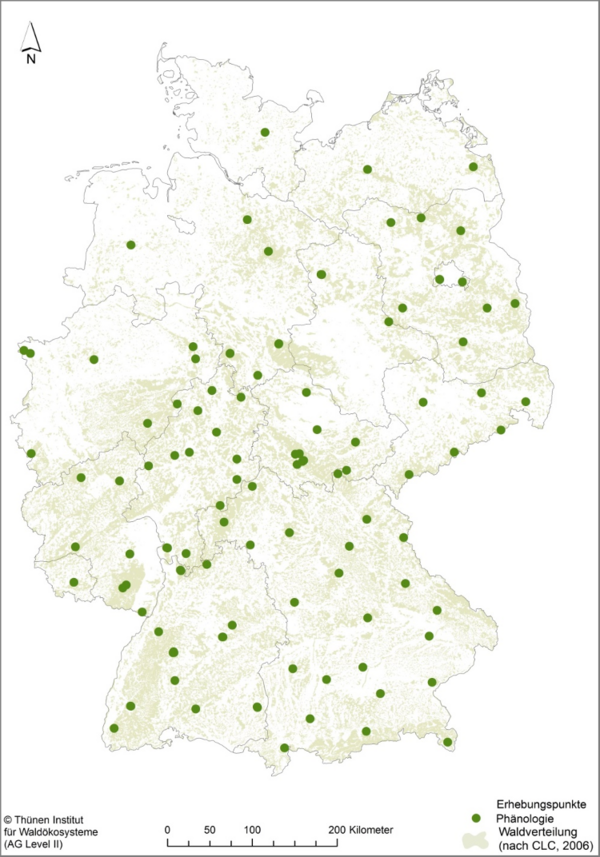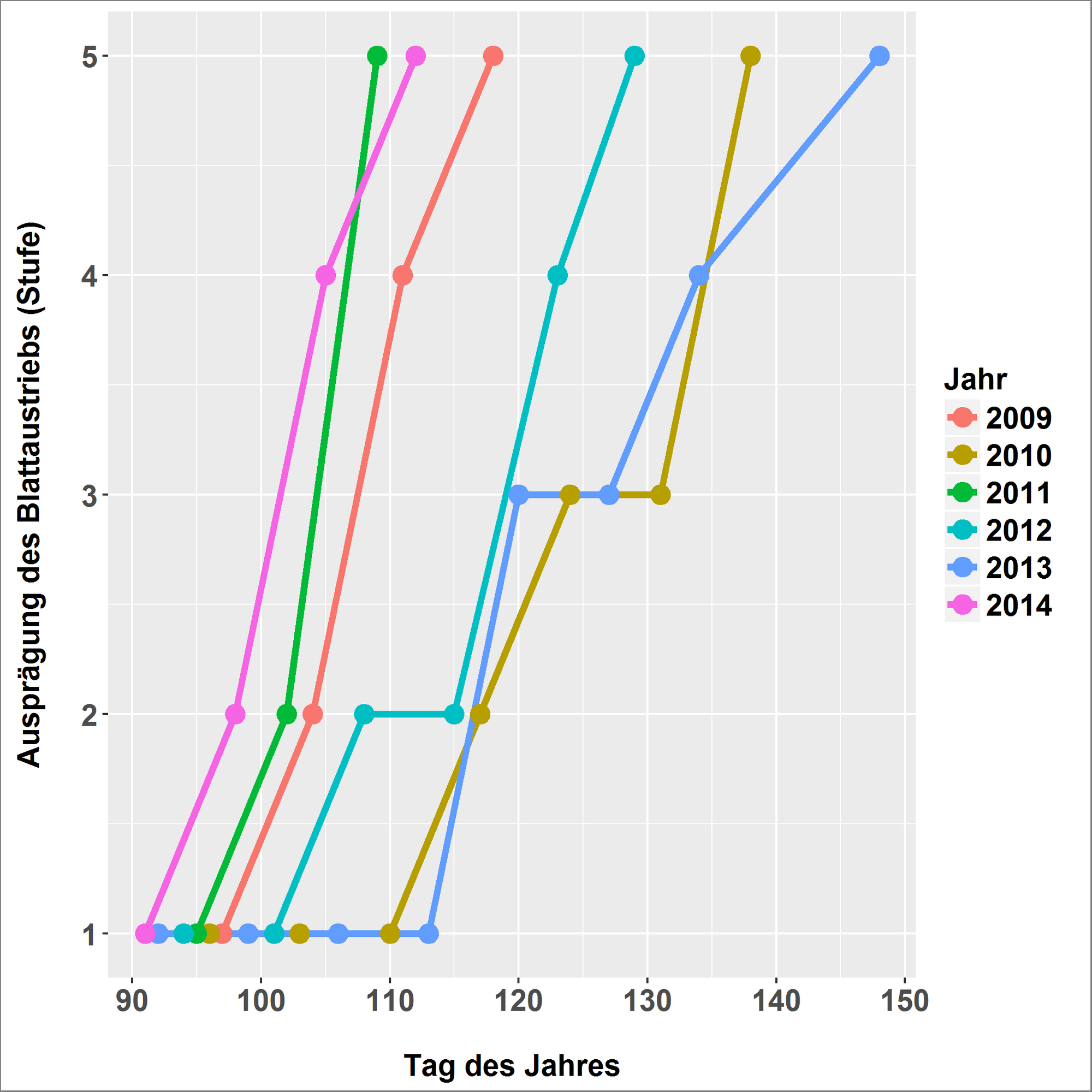Phenology
The periodic development of trees throughout the year, such as leaf unfolding, needle appearance, autumnal colouring, and leaf/needle fall, are important aspects of the temporal dynamics in the forest ecosystem. The sequence of these different development phases is recorded in phenology. Shifts in these phases can provide clues to changes in environmental conditions as well as the corresponding adaptive behavior of the trees. Phenological studies are carried out on some Level II sites as well as other intensive monitoring sites of the federal states (see Fig. 1).
When assessing a tree, the proportion of leaves or needles in the tree crown that is in a particular phenological phase or has already passed it is determined. In this way, not only the beginning of the phase is documented, but also the entire course of the phase. The stage classification shown in Table 1 is used for this purpose.
Tabel 1: Classification of the stages of a phenological phase according to the ICP Forests manual
Code | Quantity of leaves/needles |
|---|---|
1 | < 1% |
2 | 1 - 33% |
3 | > 33 - 66% |
4 | > 66 - 99% |
5 | > 99% |
This method allows, for example, to compare the timing of leaf unfolding in an oak stand near Würzburg over the years 2009 to 2014 (see Fig. 2). The data clearly shows that both the start of leaf unfolding and the time when the trees reached full foliage occurred about a month later in 2010 and 2013 compared to 2011 and 2014.
In addition to the phenological studies conducted at the Level II sites, there is also the nationwide monitoring network conducted by the German Weather Service (DWD). In contrast to the step-by-step recording within the intensive monitoring network, the DWD records only the beginning of each phase. A comparison of the nationwide averages for different phases and tree species shows that the third stage of the ICP Forests classes corresponds well in many cases with the starting phase of the DWD data (Table 2). This is a good example of how insights from from intensive forest monitoring (Level II) can be linked with extensive, nationwide surveys.
Tabel 2: Nationwise averages (day of the year) for phenological events for Scots pine, European beech, and English oak according to DWD and Level II monitoring data
Tree species | Phase | Start DWD | Level-II Class 2 | Level-II Class 3 | Level-II Class 4 |
|---|---|---|---|---|---|
Scots pine | Young shoots | 131 | 124 | 134 | 148 |
Needle appearance | 119 | 110 | 119 | 128 | |
European beech | Autumn colouring | 283 | 267 | 284 | 298 |
Leaf fall | 301 | 279 | 298 | 295 | |
Leaf unfolding | 126 | 117 | 116 | 122 | |
English oak | Autumn colouring | 288 | 270 | 293 | 302 |
Leaf fall | 307 | 289 | 305 | 288 |

